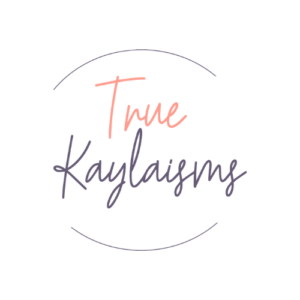Over the past several years, we have seen a shift in what started as people taking pretty pictures of their food for Instagram to people being fascinated in literally everything these people do online. No, these aren’t celebrities- they are social media influencers.
Who needs a lifestyle magazine when we have lifestyle bloggers? These people’s lives appear to be so lavish that we feel compelled to follow their every recommendation and purchase the products that they use.
Think Lebron James and Sprite, except that people can actually relate to influencers on a personal level. (Yes, I have been guilty of buying clothes and beauty products fashion bloggers have suggested to me.)
And as savvy marketers tend to do, we saw the enormous opportunity to utilize these people’s influence to sell products.
The best part? People actually trust who they are buying from rather than a random spokesperson on TV. Influencers have now become another tier of social marketing to get a company’s products in front of their target audience.
However, while influencers with followings of 100K or more seem like a great marketing avenue, many small businesses find that they either can’t afford to pay the influencer’s rate per post or that it’s difficult to compete with other companies that are shelling out their products to these sought-after people.
So how can you get in front of your target audience?
Well, consider the fact that someone doesn’t necessarily need to have thousands of followers to have an influence. Introducing, the micro-influencer.
What Is A Micro-Influencer?
Unlike users with large followings on Instagram, micro-influencers have a smaller but more defined following. For example, if I’m not blogging about social media, I focus a lot of my vestibular diagnosis and in turn have a lot of people with a similar diagnosis that follow me.
And with any focus on a hobby, disease, fashion, motherhood, fitness, etc. comes a niche following. Think about it like this, when you create an ad on Facebook, you’re narrowing down a set of demographics who will likely convert into purchases. It’s the same when finding the right influencer and topic they focus their content on.
Crazy enough, someone with as little as 1,000 followers on Instagram can have an influence. Rather than talking to a broad audience, micro-influencers posts are narrowed down and targeted to a very defined audience, which can work in your favor if you’re the right brand.
How Much Will It Cost You?
Influencers can come at a high price and most will charge $1,000 per 100,000 followers. If you have the budget, then go right ahead! However, if you’re like most small businesses I’ve worked with, you are probably trying to get the most bang for your buck – which is why micro is the way to go.
Some micro-influencers may charge dependent on their engagement or want to work out an affiliate partnership (we will touch on that in a minute,) but a lot of times will be happy just to experience your service for free.
For example, are you a water bottle company and have a few extra products to give out? Think about finding micro-influencers in the running or fitness community and offering them a few free perks in exchange for a post about your company.
Not only are you not taking a hit in your marketing budget, but in exchange, you’re also creating more brand awareness.
Create An Affiliate Partnership
So, you’ve narrowed down the micro-influencer you’d love to work with, but one post isn’t going to cut it. Think about offering them an affiliate partnership. By creating a partnership with an influencer, you’re now integrating their posts as a part of your strategy.

Every time that influencer endorses you, you can track your progress with a custom affiliate link to see how much traction you’re receiving. This is great for both you and the influencer to see if this partnership is a fit for you.
It’s also a great way to offer your influencers a commission based on what traffic they bring to your business so that you’re paying them for the ROI you see on your end.
It’s a win-win.
Work Together To Promote Your Product
If you’ve decided to strike up a deal, make sure to let the influencer know what language can be used to promote your product or service and what guidelines you have for your brand. You can also put in your agreement that they need to show or promote certain graphics of yours dependent on the terms.
However, once the ink is dry, have fun with it. Not only will an influencer’s posts help drive traffic to your website, but it could also help with your social media strategy.
Think about creating a contest with your influencer and cross-promote a giveaway of your product or service. By requiring the influencer’s audience to follow you in order to enter the giveaway, you’re building your audience while creating more awareness centered around your business.
Plus, all of the content generated from your partnership is great for “testimonials” on your site. As I said before, people trust the influencers they follow online and by partnering up with them, you’re focusing in on an untapped resource.
Was This Post Overwhelming?
Not to worry, that’s where I come into help. I will work to help discover your best advocates and help you develop your next affiliate marketing strategy.
Let’s get started today!






